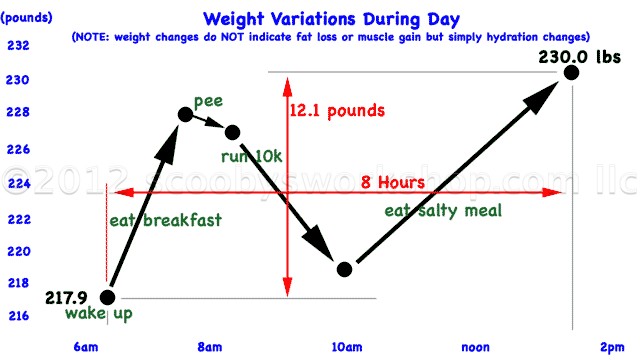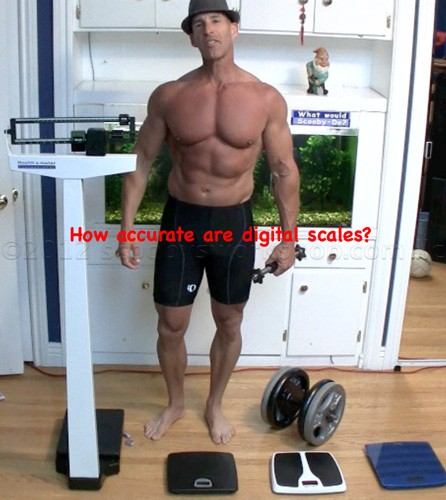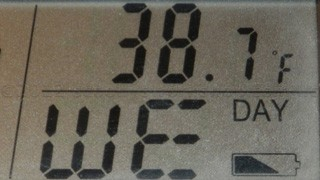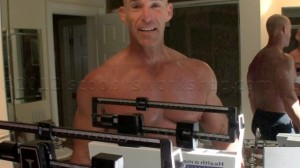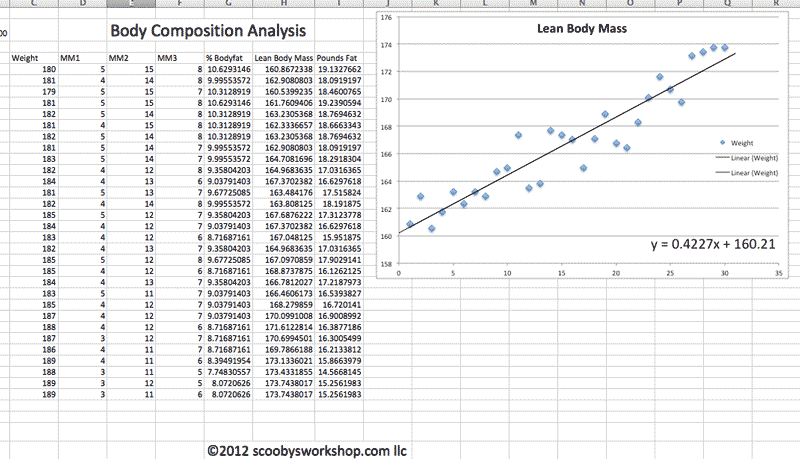How to weigh yourself accurately.
At first glance you are probably wondering why I am wasting time on something that seems so easy. Bodybuilders weigh themselves all the time, why waste time talking about how to do it? Because it is WAY more difficult than you might imagine to get an accurate weight! Serious bodybuilders need to accurately know their rate of muscle gain to be able to optimize workout strategies. Say you are a teenage newbie and your predicted muscle gain is 30lbs/yr – thats 2.5 pounds a month. Think you can weigh that 2.5 pounds accurately to see if you are on track or not? Guess again! Its way, way more difficult than you imagine. Before we discuss how to accurately weigh yourself, lets look at the three reasons why it’s so difficult:
- Daily fluxuations in weight due to hydration
- The inaccuracy of digital scales
- Temperature sensitivity of digital scales
It is also worth mentioning that if you have anxiety about your weight or have any history of eating disorders then tracking your weight down to the gnat’s eyelash might not be good for your mental health. This procedure for accurately measuring your weight and charting your body composition is for analylitical bodybuilders who are comfortable in their skin. One other thing that people often forget is that when it comes to appearance, the mirror trumps the scale – if the mirror says you are fat, then you are fat.
Daily weight fluctuations
I know that many of you dont have scales at home and just weigh yourself at the gym whenever you workout so lets look at how your weight varies over the course of a day. Your weight can vary drastically depending on how hydrated you are. When you first wake up in the morning you are very dehydrated from 8hrs of resipration and perspiration without drinking anything. Below is an actual chart of my hourly weight on the 23rd of May, 2012. The weights were measured on a very accurate beam balance scale:
If you are an active athlete like I am, your weight will have huge fluctuations during the day due to hydration changes. When waking up we are completely dehydrated after 8hrs of respiration and perspiration. Once we rehydrate and eat breakfast, the weight skyrockets, for me, by 10 pounds in a single hour! Why do I drink so much so early in the day? Because in sports and bodybuilding, hydration is critical to optimal performance! At that point I’m up to optimal hydration and ready for my physical exercise. I then do an aggressive 10k run which lasts about 55 minutes and during that run I lose about 7 pounds of water from perspiration and pee. Then I eat a salty meal and re-hydrate. The salt sets my daily weight to a new maximum as I retain ever more water than during my breakfast hydration. So, simple question – how much did I weigh on this day, the 23rd of May? 217.9 pounds? 230.0 pounds? There is a whopping 12.1 pound difference between those two measurements. See, its not quite so simple!
How accurate are digital scales?
Now lets look at another big problem, the accuracy of digital scales. Many folks are lured into a false sense of accuracy by that digit after the decimal place on the digital scales – that means they measure to 0.1pound accuracy, right? WRONG! You know me and how I love to do experiments. Lets weigh a dumbbell on four scales:
I have three new digital scales from three different manufacturers and a very accurate and precise mechanical balance beam scale. The handle and spinlocks weigh 3 pounds, the plates weigh approximately 100 pounds (four 25lb plates). I first weigh the dumbbell on the accurate mechanical scale and see that it weighs 102.0 pounds and not 103.0 pounds – no big surprise, they shorted me 1/4 pound of cast iron in each plate to save money. Sigh. OK. Here is what I got when I measured the 102.0 pound dumbbell on the three digital scales:
There is 3.1 pounds difference between the highest reading and the lowest reading. Did the dumbbell suddenly go on a diet as we moved it from scale to scale? Certainly not! :) Its just that the manufacturers of digital scales are engaged in deceptive advertising of sorts by including that meaningless digit after the decimal place. Two of the scales weren’t bad, only off by a half pound but the one on the right was off by 3.5 pounds which makes it virtually useless. An average bodybuilder might gain 15lbs muscle in a year, thats only 4.5 ounces a week. How on earth can you get any kind of reasonable gauge of progress if the scales measurement can be off by 3.5 lbs??? I think you are starting to see the problem here, but it gets even worse!
Temperature sensitivity of digital scales
Lets talk about temperature sensitivity. Many digital devices are sensitive to temperature. Lets simulate what happens when you weigh yourself on a cold morning. Most of us turn the heat off at night to save money so lets simulate a cold morning by putting the scales in the refrigerator and re-weighing the 102 pound dumbbell.
For this temperature experiment I didnt use the scale shown on the right above, the one that showed the wildly innacurate “98.5 pounds” for the dumbbell – I just used the other two scales. What I found was that at 39 degrees F:
| Measured weight at 70F | Measured weight at 39F | |
| LED Scale | 101.8 pounds (0.2 too light) | 104.2 pounds (2.2 too heavy) |
| LCD Scale | 101.6 pounds (0.4 too light) | 103.6 pounds (1.6 too heavy) |
So although two of the three digital scales were acceptable accurate at room temperature, on a cold morning they lose that accuracy.
So I know many of you got a good laugh at the seeminly simple title of this web page but I think you now see that its way more difficult to weigh yourself accurately than you thought. Bodybuilding composition changes are on the order of a miniscule ounce (30g) a day. How can you possibly measure your progress accurately when scales can be off by 5 pounds and your weight can fluxuate 10 pounds in a few hours due to hydration changes???
How to accurately determine your rate of muscle gain and fat loss
Now that you believe me that weighing yourself accurately is very difficult, let me show you how to do it.
- When: Because of the huge daily fluxuations in weight you MUST weigh yourself first thing in the morning after you go to the bathroom but before you eat or drink anything. Measuring at any other time will result in significantly less accurate results. You must also weight yourself every single day to provide sufficient data for accurate trendlines. Women, you can skip those times of the month when you feel bloated.
- What: Get a good scale, first choice in accuracy, precision and quality is a mechanical physician balance beam scale
. The one I have that I am very happy with is the Health O Meter 402KL
which costs about $170 from amazon. If you cant afford a balance beam scale or don’t have room for it then an inexpensive digital scales is fine but see #3 below. Choose one single scale and stick with it. As you have seen in my experiments above, scales can widely vary in the weight they give so results are meaningless when weights are compared between scales.
- How: Because of temperature sensitivity, its especially important with digital scales is to place the scale in a location where the temperature stays nearly constant all day long, all year long – a basement concrete floor is perfect. All scales need to be placed on a flat, hard, level surface to get consistent and accurate readings – hardwood, concrete, or very hard linoleum. Low carpet, bumpy tile, or plush padded linoleum will render readings inaccurate. It should go without saying but when you weigh yourself, be dressed the same way each time. Dont be bundled up like an Eskimo one time and buff naked the next – clothes have weight too. Some scales are sensitive to the location of the load. To insure accuracy, take a piece of blue painters tape and put one piece under the location of your big toe and then always assume that position on the scale.
- Analysis: This final point is the most important! You must data average to get accurate weight trends! As you have seen with my experiments above, individual measurements can have a lot of error in them. To remove this error and get meaningful results you have to analyze the data. I know you hated physics class but don’t let this frighten you off, I have made this way easier than it sounds!
Before we go any further, lets talk about WEIGHT. The scale is not magical, it only measure weight. Weight can be water, fat or muscle and there is no way the scale can tell what is pressing it downward. Their are scales that *claim* to measure body composition as well by using skin resistance and capacitance but these scales are about as accurate as I am with a dart board. What a bodybuilder really needs to know is the rate at which they are gaining muscle and the rate at which they are losing fat. Knowing your weight alone is not sufficient information, you have to measure your body composition every day also!
How to analyze weight data and establish trendlines
OK, now that you have a month of weights and skinfold measurements, how do you analyze them? By downloading and using my handy dandy AccurateWeightCharting.xls spreadsheet of course! Despite the careful measuring techniques listed above, each day’s data measurement has some error associated with it. By doing a best fit curve thru the data over the course of 30 days, the errors average out and leave us with a very accurate trend curve! After downloading the excel spreadsheet, put in your months worth of data.
- Data to be input is shaded in green, start with your age in cell B:2. Your age is needed to calculate your body fat.
- Next, enter your daily weight measurements for the month into column C. Column 5 is listed as “Day 1”, thats the first day you started taking measurements.
- Now enter your skinfold thickness at each of the three measurment locations into columns D, E and F.
- After you do this you will see a chart like the below.
So, what do you do with the chart other than print it out to amaze your friends and co-workers? Lets look at what the charts tells us.
- Starting with chart labeled “Lean Body Mass”. If you are a mature adult then this chart is really just muscle mass. If you are a growing teen, the increasing LBM is due to bone, muscle, and organs. A line that slopes up and to the right is what we want to see. It means that with every passing day you are adding muscle. The equation in the lower right hand corner describes the trendline, with the sample data it shows “y = 0.4291x + 165.13” The most important thing is the slope of the line, the number in front of the variable “x”. In this example it means that every day your LBM is increasing by .4291 pounds.
- The next chart labeled “Pounds Body Fat” is exactly what it sounds like. A graph of how your bodyfat has changed during the month. Most likely what we want to see is a flat line or one that goes down and to the right (getting leaner) but if you are bulking it will go up and to the right. Again what is very important is the equation that describes the trendline, in this case “y = -0.1296x + 14.163”. The slope is the key again, in this case it shows us that every day we are losing .1296 pounds of fat.
- The actual raw results in columns G, H, and I showing bodyfat percentage, LBM, and fat each day isnt that interesting – its easier to comphrehend in the graphs.
- So what do we do with all this accurate information? Use it to make decisions! People always ask how often ask if workout X is better than workout Y, now you can find out! Do workout X for a month, do workout Y for a month, then compare the Lean Body Mass charts – which gave you the largest daily mass gain? You can also use it to see when its time to change workouts. Watch your charts every month, if the daily mass gains remain constant then you can keep your current workout routines, otherwise its time to mix it up.
This is all too much work you say? Who said bodybuilding was easy? You get out of it what you put into it. Bodybuilding isnt just grunting and lifting weights but requires a lot of thinking, reading, and analysis if you want to maximize your progress. If you are fine with gaining a bit of muscle and getting fit then its not worth the bother to even weigh yourself, just use the mirror for feedback.

